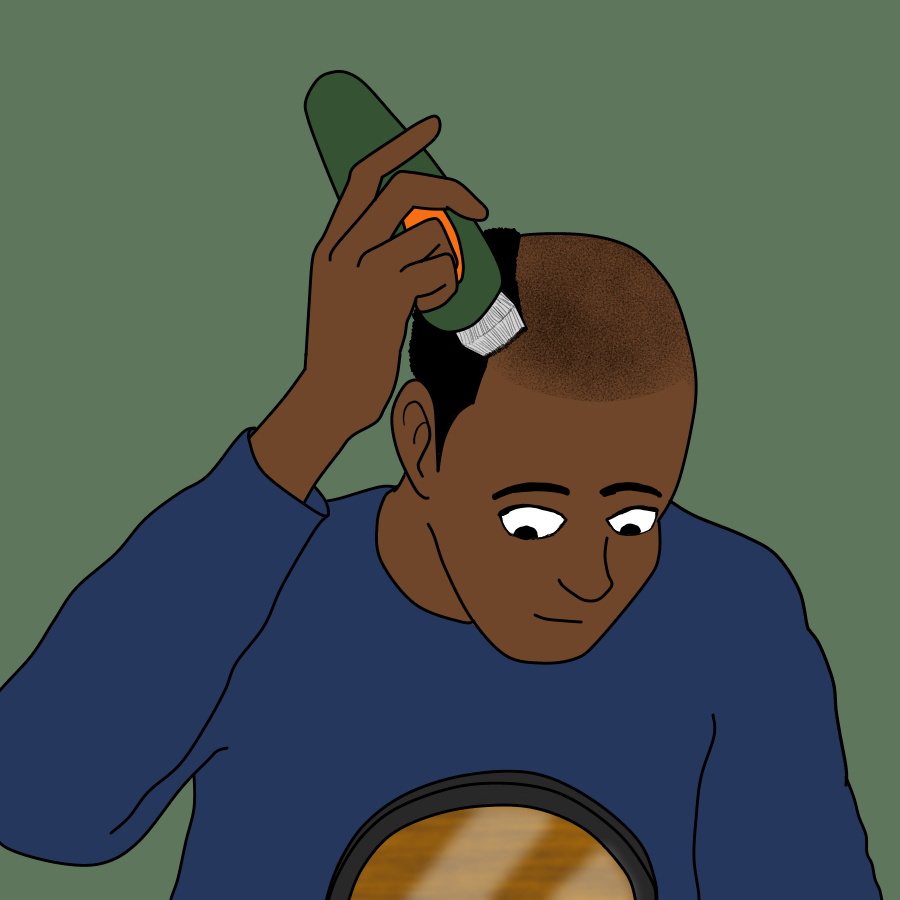Opinion | Shave your head — especially if you are femme-presenting
May 17, 2022
In March of 2020, I succumbed to what would evolve into a popular quarantine trend — shaving my head.
The beginning of the pandemic was seen as a time when people could experiment with things in the comfort of their own home, so the prospect of mainly staying indoors with my new haircut seemed all too good to be true. Not to mention that the upkeep would cost me nothing, save the $15 I initially spent on some cheap clippers.
When my brother did something similar, he wasn’t faced with the same shocked reactions as me. There’s this societal expectation for feminine-presenting people, especially women, to have long hair and for masculine-presenting people to have short hair.
This isn’t as rigid of a divide anymore, especially now when we see the concept of gender changing. But hairstyles still often fall within this arbitrary binary. Long hair could mean that someone is healthy and cared for in many cultures, regardless of gender, but it became associated as a feminine trait by the ancient Greeks.
The truth is, hair isn’t something that should be gendered — nearly every human has it, and it varies widely in texture, color and style. Hair has cultural ties as well, long hair representing pride for one’s culture among all genders in Native American culture and it being a symbol of mourning when one cuts their hair in Hawaiian culture.
Overall, I say stick it to those who believe long hair is a necessary quality in someone femme-presenting. There are a multitude of reasons to shave your head. Gender is a weighty topic, but the bottom line is that hair should not be a consideration when deciding to shave your head. In fact, gender is something that is socially defined and changes over time. Basically, it’s all made up.
Shaving your head can foster confidence and affirm the fluidity of gender, even if it’s just something you do once to change up your routine.
When I first cut my hair, even just into a pixie cut, the main comments I got from people were questions about when I was going to grow my hair back out. I’ve varied my hair length since my first year of high school, so I didn’t really know what they meant by that. As a woman, my society expects me to have my hair long. But was my brother asked the same thing? No.
It’s always been suggested to me that I should have long, flowy hair and wear flowery dresses simply because I’m a woman. When I shaved my head I was regarded as a woman breaking the rules, so any other gender norms that I broke were complementary to my lack of hair and weren’t shocking.
It’s not bad to have long hair if you’re feminine, but it shouldn’t be bad to have a shaved head if you’re feminine either. The topic of hair is something so rooted in femininity that our culture has forgotten that we can live without it.
Another thing people told me was that they could never pull off a bald head but that I did it so well. Truth is, I don’t think I did it better than anyone else. What helped me the most was confidence and growing into my skin.
I have a large head, something that my hair covers up most of the time. Being bald made me vulnerable, both physically and to criticism, but feeling that vulnerability increased my confidence. I was interrogated by others, which made me question myself, but I knew in the end that it was just hair. It would grow back.
I had to find ways to make a shaved head fun, even if there were days when I woke up and wished I could fit in and have long hair like my other femme-presenting peers. I needed to see all of the good in this experience, lest I ruminate too hard on the bad days where I swore my head looked like an egg. Buzzing all of your hair off isn’t something you just ease into, but the confidence you gain from it is rock-solid.
And have you ever even seen what your bald head looks like? I hadn’t, before I took the faithful leap of making this decision. A bald head isn’t just perfectly bald — it is made up of a mosaic of imperfections that make you who you are. For example, there were freckles, scars and places on my head where the hair grew differently that I had never even considered before. It was like getting to know parts of my body that I had never even seen before, and it felt like I knew myself better afterwards.
Patience is a virtue, and nothing says that more than waiting for your hair to grow out to your desired length. As of right now, I am about two years into the process and my hair is the longest it’s been in seven years. It isn’t long by any means, and I still have a long way to go before I can begin to do cool styles with it again, but it will grow back in time. Unless you plan on having a shaved head forever, you’re probably going to want to experiment with hairstyles again, and that’s going to take some time since you’re essentially starting from square one. Allowing your hair to grow through these different lengths is uncomfortable, but allows growth in personhood and self-security as well.
Personally, I think shaving your head is something that everyone should do over the course of their lives at least once. It forces you out of your comfort zone in doing something against the grain. It challenges you to think long and hard about how gender norms have permeated styles of hair, and how hard patience can be as you are waiting for your hair to grow.
These setbacks are good things, though. They foster confidence in oneself and the ability to wait for things you really want. So if you’re thinking about shaving your head, make that trip to the corner store to buy some inexpensive clippers, or to your local barbershop, and don’t look back.
Jessica Snyder primarily writes about controversy in art and politics. Write to her at [email protected].




